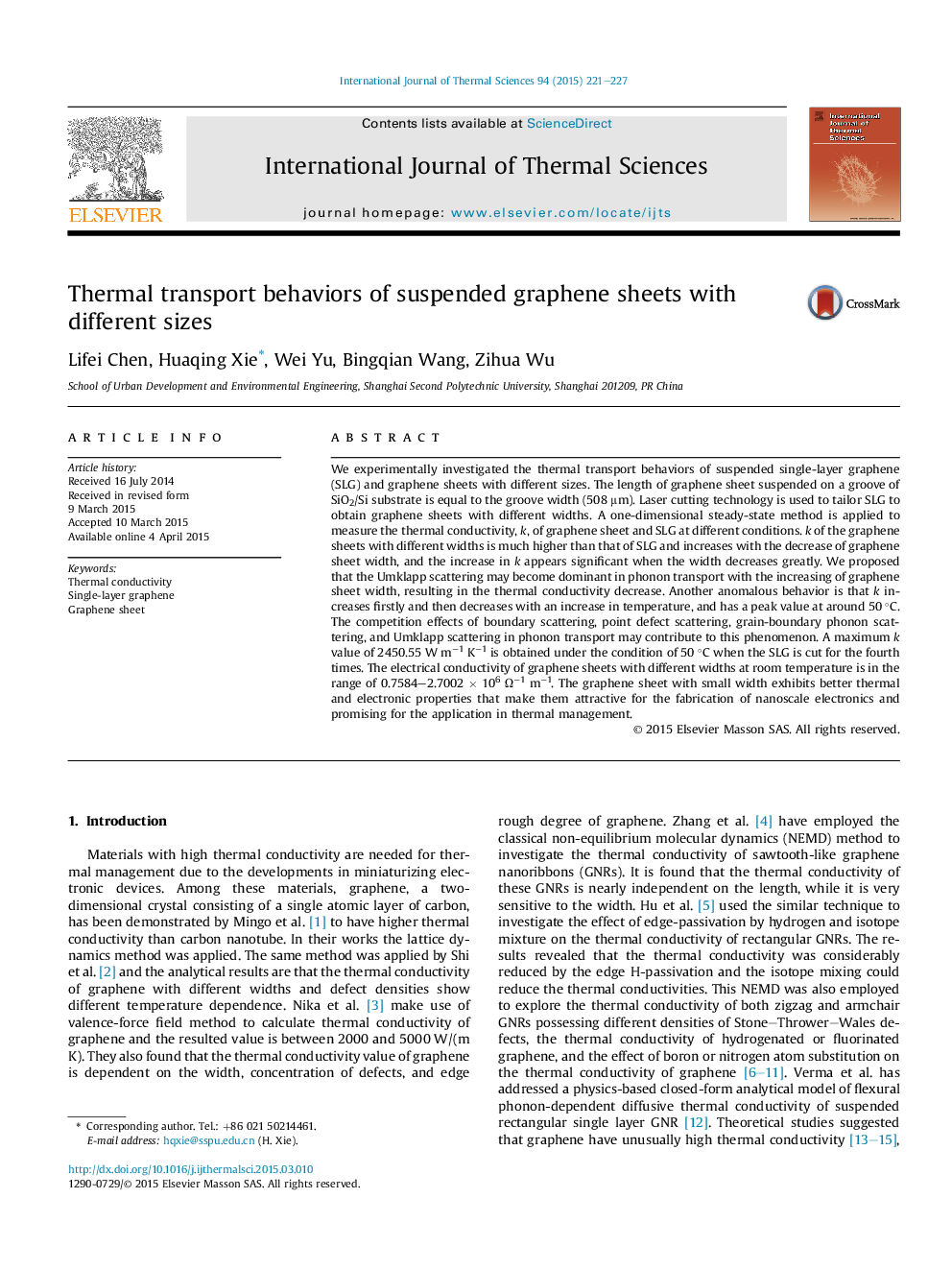| Article ID | Journal | Published Year | Pages | File Type |
|---|---|---|---|---|
| 668089 | International Journal of Thermal Sciences | 2015 | 7 Pages |
•Graphene sheet is suspended.•Graphene sheet is single layer.•One-dimensional steady-state method is applied.•Laser cutting technology is used to tailor SLG.
We experimentally investigated the thermal transport behaviors of suspended single-layer graphene (SLG) and graphene sheets with different sizes. The length of graphene sheet suspended on a groove of SiO2/Si substrate is equal to the groove width (508 μm). Laser cutting technology is used to tailor SLG to obtain graphene sheets with different widths. A one-dimensional steady-state method is applied to measure the thermal conductivity, k, of graphene sheet and SLG at different conditions. k of the graphene sheets with different widths is much higher than that of SLG and increases with the decrease of graphene sheet width, and the increase in k appears significant when the width decreases greatly. We proposed that the Umklapp scattering may become dominant in phonon transport with the increasing of graphene sheet width, resulting in the thermal conductivity decrease. Another anomalous behavior is that k increases firstly and then decreases with an increase in temperature, and has a peak value at around 50 °C. The competition effects of boundary scattering, point defect scattering, grain-boundary phonon scattering, and Umklapp scattering in phonon transport may contribute to this phenomenon. A maximum k value of 2450.55 W m−1 K−1 is obtained under the condition of 50 °C when the SLG is cut for the fourth times. The electrical conductivity of graphene sheets with different widths at room temperature is in the range of 0.7584–2.7002 × 106 Ω−1 m−1. The graphene sheet with small width exhibits better thermal and electronic properties that make them attractive for the fabrication of nanoscale electronics and promising for the application in thermal management.
